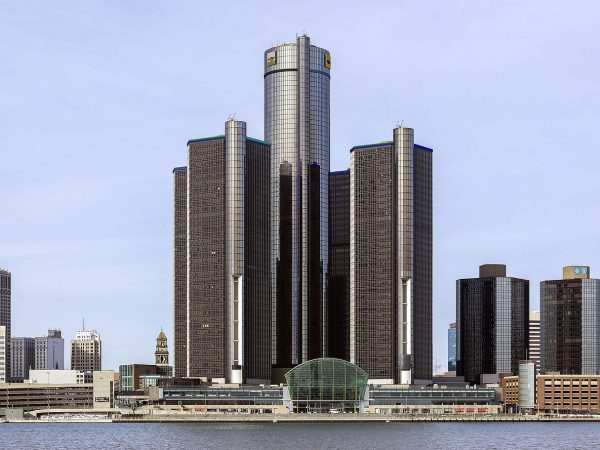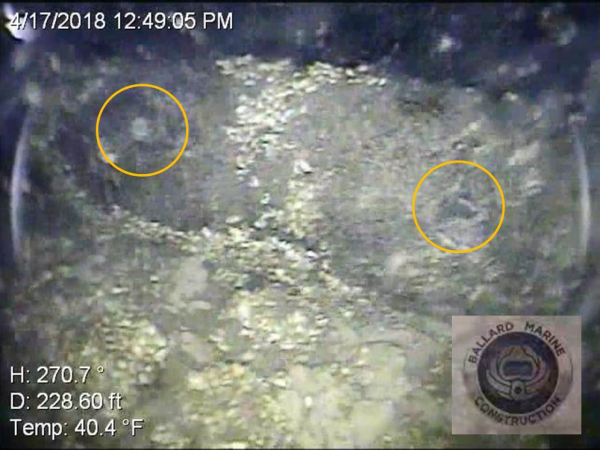
By Kelly House, Bridge Michigan
The Great Lakes News Collaborative includes Bridge Michigan; Circle of Blue; Great Lakes Now at Detroit PBS; Michigan Public, Michigan’s NPR News Leader; and who work together to bring audiences news and information about the impact of climate change, pollution, and aging infrastructure on the Great Lakes and drinking water. This independent journalism is supported by the Charles Stewart Mott Foundation. Find all the work HERE.
- Michigan’s aging water infrastructure is about to get a $290 million funding boost, as the state prepares to spend down bond money on the cause
- The money comes from a 2002 voter-authorized bond
- It’s still far short of the estimated need as Michigan contends with billions in deferred maintenance to water systems
Michigan will soon deploy $290 million in bonding authority to boost lead pipe replacements and update drinking water and sewer systems across the state, Gov. Gretchen Whitmer announced Monday.
The money comes from the 2002 voter-approved Great Lakes Water Quality Bond, which the state is preparing to spend down as part of a $500 million water strategy that Whitmer first unveiled in 2020.
Announcing the funding on Earth Day and just three days before the 10th anniversary of the Flint water crisis, Whitmer said “safe drinking water must be a guarantee.”
“Every parent should have the confidence to give their child a glass of drinking water from the sink when they sit down at the table,” Whitmer said, while acknowledging that Michigan has too often “fallen short on that promise.”
In the decade since Flint’s notorious water crisis, lawmakers have ramped up spending on water infrastructure primarily by funneling billions of federal COVID stimulus and infrastructure dollars to the cause.
The biggest infusion came in 2022, when lawmakers passed a bipartisan spending bill that included nearly $2 billion for water systems.
Yet as Bridge Michigan has reported, Michigan needs even more.
Communities across the state are contending with aging infrastructure, frequent breakdowns and steep rate hikes after decades of deferred maintenance.
The root causes: Past political pressure to keep water rates low, which shifted maintenance costs onto today’s users; a long-term decline in federal funding for water infrastructure, and suburban sprawl that has added more pipes, plants and pumps, even while Michigan struggled to maintain its existing inventory.
Phil Roos, director of the Michigan Department of Environment, Great Lakes and Energy, said the bond money will enable EGLE to dole out more grants and loans to repair water treatment plants, upgrade sewers, remove lead lines and more.
But he acknowledged “we have a lot more to do.”
Then-Gov. Rick Snyder’s 21st Century Infrastructure Commission recommended in 2016 that the state spend nearly $1 billion annually on water infrastructure upgrades over the next two decades. The price tag has only grown in the years since.
This year, Roos said, local governments have asked his agency for a combined total of $3.5 billion in water funding. Even with the $290 million boost announced Monday, EGLE only expects to be able to fulfill about 28 percent of those requests.
Beyond seeking more money to maintain its water systems, experts say Michigan communities should consider consolidating water systems to regain cost-efficiencies that were lost by sprawl.
For instance, Benton Harbor’s water system now operates at just a tenth of its capacity, in part because two neighboring townships left the system and built their own plants just down the road.
The combined capacity of three water plants within a few miles of each other could serve the region multiple times over.
Catch more news at Great Lakes Now:
Judge holds Flint in contempt for continued lead pipe replacement delays
Great Lakes Now sits down with director of Flint water crisis film “Lead and Copper”
Featured image: Gov. Gretchen Whitmer toured ongoing upgrades at a Delta Township water treatment plant on Monday before announcing plans to use $290 million in bonding authority to address Michigan’s water infrastructure challenges. (Courtesy photo)




